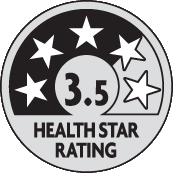Soup Sensations Sweet Potato, Pumpkin & Caramelised Onion - Continental - 63 g
This product page is not complete. You can help to complete it by editing it and adding more data from the photos we have, or by taking more photos using the app for Android or iPhone/iPad. Thank you!
×
Barcode: 9300830057511 (EAN / EAN-13)
Quantity: 63 g
Brands: Continental
Categories: Plant-based foods and beverages, Plant-based foods, Fruits and vegetables based foods, Meals, Dried products, Dried products to be rehydrated, Soups, Dried meals, Vegetable soups, Dehydrated soups
Labels, certifications, awards:
Australian made, Health Star Rating, Health Star Rating 3.5
Countries where sold: Australia, New Zealand
Matching with your preferences
Environment
Carbon footprint
Packaging
Transportation
Report a problem
Data sources
Product added on by inf
Last edit of product page on by foodvisor.
Product page also edited by lcmortensen, logant, roboto-app, teolemon.
If the data is incomplete or incorrect, you can complete or correct it by editing this page.






